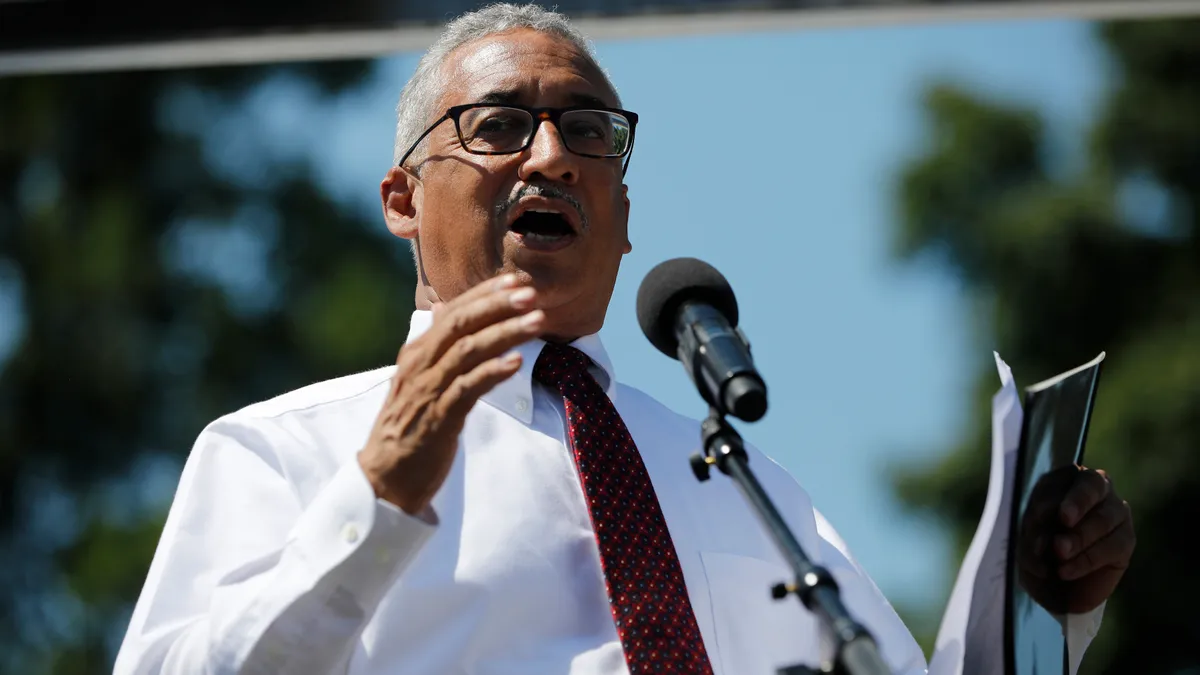Dive Brief:
- Two prominent House Democrats introduced a bill Thursday that would double the maximum Pell Grant award and substantially rework the federal student loan system, including changes to the troubled Public Service Loan Forgiveness program.
- The Lowering Obstacles to Achievement Now, or LOAN, Act, would also make certain unauthorized immigrant students eligible for federal financial aid, and it would attempt to lower interest rates on student loans so they would not exceed 5%.
- The bill also aims to make loans cheaper, such as by giving graduate students attending nonprofit colleges access to subsidized loans at the same interest rate as unsubsidized loans. It would also repeal origination fees.
Dive Insight:
Democrats presented the LOAN Act as a continuation of President Joe Biden’s decision to cancel mass amounts of student loan debt, up to $10,000 per person making under $125,000 a year. Pell Grant recipients in the same income bracket can have up to $20,000 forgiven.
It can also be viewed as a Democratic foil to Republican proposals to broadly reshape postsecondary education.
Virginia Foxx, a North Carolina Republican who is ranking member of the House Committee on Education and Labor, said in an appearance this week the GOP is moving toward a comprehensive “vigorous higher ed bill next year” if it retakes the majority in Congress.
A first step in that undertaking is Republican leaders’ student loan system bill — the Responsible Education Assistance through Loan, or REAL, Reforms Act — which would pare down repayment plan options. It would also entirely end Public Service Loan Forgiveness, PSLF, which wipes away the debt of nonprofit and government workers after a decade of qualifying payments.
The LOAN Act, meanwhile, would truncate the PSLF timeline, enabling borrowers to have debt canceled under the program after eight years of on-time payments, down from 10 years. It would also remove the requirement that borrowers be employed in a public service job at the time of forgiveness. And it makes clear that certain reasons for loan forbearance or deferral, like cancer treatment, would count toward PSLF cancellation.
Further, the Democrats’ bill would push the maximum Pell Grant award — a proxy for low-income status — to $13,000 over a period of about five years. The current maximum Pell Grant is $6,495.
Students and families eligible for other federal aid like food stamps or Medicaid would automatically qualify for the maximum Pell Grant award, and they could receive up to $1,500 more.
Federal financial aid would also be able to be given to recipients of the Deferred Action for Childhood Arrivals, or DACA, program, which protects from deportation students and workers who were illegally brought to the U.S. as children.
In an effort to lower interest rates, the LOAN Act would also tie rates for all student loans to the 10-year Treasury note on or after July 1, 2023.
The proposal is sponsored by Rep. Bobby Scott, a Virginia Democrat who chairs the House education committee, and Rep. Frederica Wilson, a Florida Democrat.
The Democrat and Republican bills share one provision — they would both nix a practice known as interest capitalization, in which borrowers’ debt balloons as unpaid interest is added to the principal amount of a loan.
“The LOAN Act will rein in the soaring cost of college and ensure the gates of higher education remain open to everyone — not just the wealthy few,” House Speaker Nancy Pelosi said in a statement. “Building on President Biden’s historic student debt relief, this legislation will help widen the path to prosperity: giving graduates more room to breathe and empowering future students to pursue their dreams.”
Biden’s loan forgiveness action shifted the already vitriolic debate over college affordability and the future of the federal student loan program into overdrive. While lawmakers may attempt small-scale fixes to address the high cost of college, policy experts opine little can be accomplished on that front without a significant rewrite to the federal Higher Education Act and state-level shifts.










